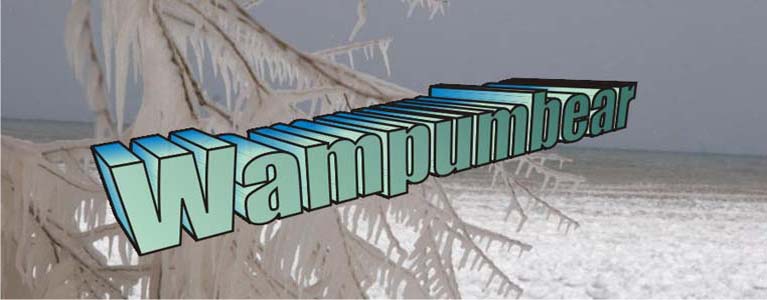 |
Photographs (left to right): Ohiopyle Falls, Pennsylvania; Hamlin State Park, New York; Cucumber Falls, Pennsylvania
Wampum Belt Archive
Children of the First Light
(name taken from Article Title with belt)
Peabody Essex Museum

18th Century ca Iroquois
Aa_Six Nations Hexagon Belt Peabody E39383.jpg

Bottom belt included with article but doesn't match the belt description
Original Size: |
Rows: 6. Columns: Beaded Length: 42.0 inches. Width: 18.0 inches. Length w/fringe: 66.0 inches |
Reproduction: |
Hamell original with Rick Hill |
Beads: |
Length: 245 rows. Width: 38 rows. Total Beads: 6,973 |
Materials: |
Warp: Leather. Weft: Artificial Sinew. |
Description:
This description was with the belt image - however it does not describe the above belt but perhaps the belt below. I have written the Peabody Museum for clarification.
“Wampum are cylindrical shell beads, typically about one Quarter inch in length and one eighth inch in diameter. Wampum beads are white or purple, with the white made from the interior column of the Atlantic whelk shell and the purple made from that of the quahog…. The more important use of wampum was as a symbolic and documentary medium. Among the Iroquois, wampum strings functioned as mnemonics for reciting ritual speeches, while belts of wampum solemnized intertribal communiqués and commemorated councils and treaties” (103)
“Belts made mainly from white beads suggest cordial diplomacy, while those that made extensive use of purple
(sometimes referred to as “black” beads) have more sober connotations. The meaning of the belt shown here,
which is predominantly purple with ten white cross-filled hexagons, is now lost, but it bears faint traces of red
paint on some of the beads and fringe. Belts marked with red were understood as a call to war.” (105)\
Quoted from: Above citations quoted from: Uncommon Legacies: Native American Art from the Peabody Essex
Museum, by John R. Grimes, Christian F. Feest, and Mary Lou Curran. NY: American Federation of Arts, New
York in association with University of Washington Press, Seattle and London, 2002; 103, 105.
Peabody Museum. 2002. Uncommon Legacies: http://teh.salemstate.edu/Immigration/Vanishing-Ind/pages/E53442WampumIriquois_jpg.htm
 |
 |
 |
 |
 |
 |
 |
 |
|---|